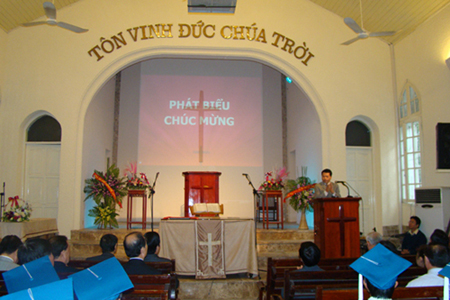Protestantism entered Vietnam later than other religions did. It was brought to Vietnam by CMA in the late nineteenth and early twentieth century’s. Here are some important temporal landmarks and events relating the early spread of Protestantism in Vietnam:...
Protestantism entered Vietnam later than other religions did. It was brought to Vietnam by CMA in the late nineteenth and early twentieth century’s. Here are some important temporal landmarks and events relating the early spread of Protestantism in Vietnam:
In 1887, while doing missionary work in Hua Nan (China), Pastor A. B. Simpson—the founder of CMA—visited Vietnam to assess the situation. On his return from Vietnam, he wrote in the magazine Word, Work and World in January, 1887, as follow: "The Indochina Peninsula has fallen into oblivion for a long time. The Kingdom of Annam must be conquered for Jesus Christ. Why aren't this kingdom and Tibet considered by Christian believers as one of the first areas of evangelization?"
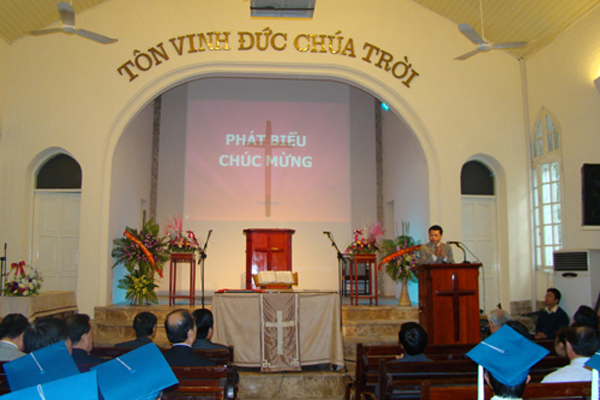
In 1893, Pastor D. Leclacheur—an assistant of A. B. Simpson—came to Sai Gon to observe the situation. When going home, he reported to A. B. Simpson: "Vietnam and the whole of Indochina under French domination are open to Protestant evangelization."
In 1897, Pastor C. H. Recves crossed the Sino-Vietnamese border to enter Lang Son to investigate the situation of evangelization, and eventually had to leave without any success.
In 1899, Pastor R. A. Jaffray from China walked along the Red River to Hanoi with the intention of building a base for Protestant evangelization here but failed to achieve any result.
In 1902, Pastor s. Dayan and his wife from Canada arrived in Hai Phong with the hope of receiving support from the French. However, like their previous co-workers, their attempts ended in failure and they were forced to return home.
In 1911, Pastor R. A. Jaffray together with two other pastors, P. M. Hosier and G. L. Hugles, arrived in Da Nang. With the help of Mr. Bonnet from the Bible Societies, who had been living in Da Nang since 1902, Pastor R. A. Jaffray succeeded in building the first base for evangelization here. Hence, the year 1911 is considered the landmark of the beginning of Protestantism in Vietnam.
The establishment of the Protestant base in Da Nang was great news for the leaders of CMA. Pastor A. B. Simpson decided to send more clergymen to Vietnam. In 1914, there were only nine clergymen from CMA in Vietnam. The number of clergymen had doubled by 1921 and tripled by 1927.
From Da Nang, clergymen of CMA expanded their missionary work to the neighboring communities and sent missionaries to the north and central regions of Vietnam to spread Protestantism. In 1915, under the pretext of American Protestant clergymen working as spies for the Germans during the war between France and Germany, the French authorities in Indochina banned the clergymen of CMA from their missionary work in this peninsula. In the face of this situation, in 1916, Pastor Faffray as vice-head of CMA in China met with the then- Governor general of Indochina to ask for permission for the Protestant clergymen to freely evangelize.
After seven years of missionary work, by 1918, the CMA had established five churches in North Vietnam, six in the Central Vietnam and five in South Vietnam. All of these Protestant churches received the permission of the French Resident Superior and the Royal Court of Vietnam to operate under the name Evangelical Mission of French Indochina (Mission Evangelique de L'Indochine Francaire—MEI).
Between 1914 and 1925, clergymen of CMA like W. C. Cadman and J. D. Olsen and their wives, with the help of several Vietnamese Confucian scholars such as Phan Khoi, started to translate the Bible into Vietnamese to facilitate the evangelization of Protestantism in Vietnam. In 1921, a Protestant church was built in Hanoi and a Bible school was opened in Da Nang. During 1924-1926, in Da Nang, the CMA organized the so- called general congresses which aimed to deal with religious affairs. In 1927, the Fourth General Congress officially elected the Managing Committee of the Protestant church in Vietnam and appointed Pastor Hoang Trong Thua Chairman of the Committee. The Protestant church in Vietnam was also named French Indochinese Protestant Church. Later, the Fifth General Congress (1928) approved the Church's regulations. However, it was not until the Eighth General Congress (1928) that the regulations were revised and implemented. Regarding the name of the Church, not until 1945 when the Japanese staged a coup d'eta’t was it renamed Vietnam General Confederation of Evangelical Churches. This name has existed since then. The Fifth General Congress also decided to divide the scope of Protestantism in Vietnam into two regions: the North-Central region and the South region. In 1931, the scope of Protestantism in Vietnam was re-divided into three regions: Northern Vietnam, Central Vietnam and Southern Vietnam. These three regions of Protestantism have existed since then.
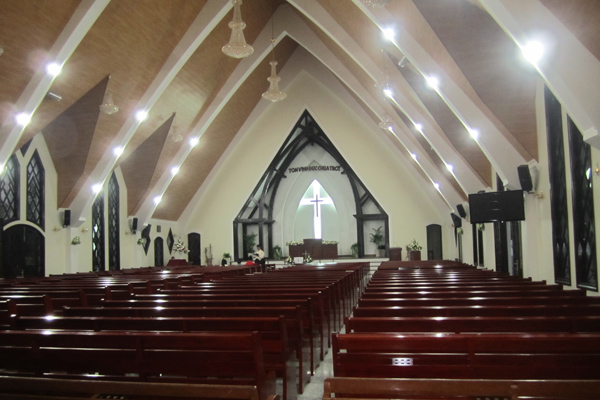
In 1926, fifteen years after the founding of the first CMA base in Da Nang (1911), Pastor A. H. Jackson, a Canadian pastor, arrived in the Central Highlands to look for new missionary opportunities. In 1929, he and his wife decided to carry out missionary work in Da Lat. Following A. H. Jackson, clergymen of the CMA and the Vietnam General Confederation of Evangelical Churches went to the Central Highlands to spread Protestantism. However, it was not until the early 1940s onward that the missionary work in the Central Highlands was paid enough attention to by the CMA and the Vietnam General Confederation of Evangelical Churches. In 1942, A. H. Jackson and the Vietnam General Confederation of Evangelical Churches set up the Foreign Religions Mission, which was the base for the establishment of the later organization of Protestantism in the Central Highlands. In the 1930s and 1940s, the ethnic minority groups in the Central Highlands began changing to Protestantism. They included the Co-ho (1929), Cham (1931), Hre (1933), Cho-ro (1934), E-de (1934), Gia-rai (1940), M'nong (1940), Pa-co (1940), Ko- tu (1941), Bana (1941) and so on.
The CMA came up against a lot of difficulties in the early stage of Protestant evangelization in Vietnam. They included unfavorable conditions in political, cultural and ideological aspects. These factors were coupled with the refusal of France and Japan to allow Protestant preachers to undertake missionary work within their sphere of influence. Accordingly, it was not until 1911 that the CMA had its first base in Da Nang. By 1945, Vietnam had approximately 15,000 Protestants and about 100 sects in Vietnam. In 1954, the numbers of Protestant followers and sects rose to over 60,000 and 154 respectively. In that year, there were also nearly 100 pastors and missionaries. About 6,000 Protestant followers were from the ethnic minority groups in the Central Highlands.
The Geneva Agreement in 1954 led to Protestantism developing differently in the North and the South. In the North, as the majority of Protestant followers and clergymen had fled to the South, there were only nearly one thousand followers and more than ten pastors and preachers left. In 1958, the remaining Protestant followers and clergymen in the North set up their own church called the Vietnam General Confederation of Evangelical Churches (Northern Region). It had two organizational levels: the central level and the branch level. It was headquartered at number 2 Ngo Tram Street, Hanoi. In 1958, the Vietnam General Confederation of Evangelical Churches (Northern Region) decided to draft its own regulations. Eventually, the official regulations of the Vietnam General Confederation of Evangelical Churches (Northern Region) were approved by the Eighth Church Congress in Hanoi in 1962. In 1963, its official regulations (known as the 1963 Regulations) received the approval of the Government of the Democratic Republic of Vietnam. The 1963 Regulations basically maintained the traditional features of the 1936 Regulations. Particularly, the 1963 Regulations specified a course of action which was progressive in terms of social content: Worship God and love the country. This course of action was still maintained by the Vietnam General Confederation of Evangelical Churches (Northern Region) through the amendment of the Charter 2004 when Vietnam was in the renovation period. For example, the Charter 2004 reads: "As God teaches: 'Worship God and love others with all one's heart, soul, mind and strength.' It means that one should wholeheartedly worship the Trinity; love the nation; protect peace; and secure justice, humanity, freedom, equality and labor . . . The Vietnam General Confederation of Evangelical Churches (Northern Region) operates according to the constitution and law of the Socialist Republic of Vietnam."
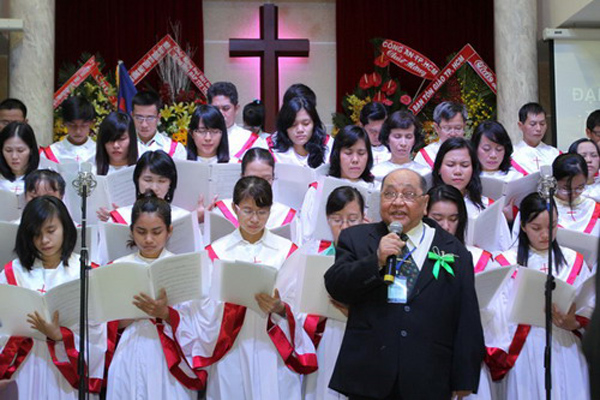
By 2005, the Vietnam General Confederation of Evangelical Churches (Northern Region) had about 6,000 followers and 14 sects in Northern provinces and cities including Hanoi, Lang Son, Hai Duong, Hai Phong, Thai Binh, Nam Dinh, Ha Nam, Thanh Hoa, Ha Tay and Vinh Phuc. These figures excluded the new Protestant followers in the Northern mountainous provinces who had agreed to join the Vietnam General Confederation of Evangelical Churches (Northern Region).
By 2009, the Vietnam General Confederation of Evangelical Churches (Northern Region) had held thirty-four congresses, including the three general congresses in 1955, 1956 and 1957 as part of the Vietnam General Confederation of Evangelical Churches.
When the Vietnam General Confederation of Evangelical Churches (Northern Region) was established, Pastor Duong Tu Ap was appointed as the Chairman and Hoang Dinh Giap served as the General Secretary. After Pastor Duong Tu Ap died in 1966, Pastor Hoang Kim Phuc succeeded him until his own death in 2000. After Hoang Dinh Giao died in 1961, Pastor Bui Hoanh Thu was appointed the General Secretary. He held the posts of Chairman and General Secretary concurrently from 1966 to his death in 1966. In December 2004, the Thirty-seconil Plenary Congress appointed Pastor Phung Quang Huyen as thi' Chairman, Pastor Nguyen Gia Huan as the Vice Chairman, and Pastor Au Quang Vinh as the General Secretary. In February 2009, the Thirty-third Plenary Congress elected Pastor Nguyen Huu Mac as the Chairman, Pastor Phung Quang Huyen as the Vice Chairman, and Pastor Bui Van San as the General Secretary.
During 1954-1975, the CMA invested money, provided facilities and sent clergymen to the South to help the Vietnam General Confederation of Evangelical Churches (Southern Region) build up an efficient organizational system and expand its religious, economic, cultural and social establishments. At that time, both the CMA and the Vietnam General Confederation of Evangelical Churches (Southern Region) took advantage of the then political situation to evangelize and develop their forces. When carrying out missionary work, they paid special attention to mass media, using it as the principle means for evangelization.
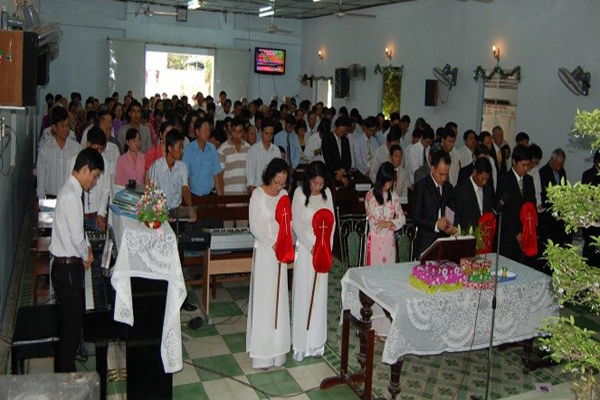
In terms of organization, the Vietnam General Confederation of Evangelical Churches (Southern Region) was the succession of the Vietnam Protestant Church. It had three organizational levels: the central level, the regional level and the branch level. In 1959, the Twenty-seventh Church Congress officially recognized the Central Highlands Protestant Church as part of the Vietnam General Confederation of Evangelical Churches (Southern Region). In 1962, the Thirtieth Church Congress divided the Protestant region in the South into four sub-regions: North Central Region, South Central Region, Southern Region and Highland Region. In 1969, the Thirty-sixth Church Congress divided the Southern Region into East Southern Region and West Southern Region. The Highland Region was also divided into Central Highland Region and South Highland Region. Hence, by 1969, the Vietnam General Confederation of Evangelical Churches (Southern Region) had a total of six regions. In 1973, the Thirty-ninth Church Congress divided the West Southern Region into Central Southern Region and West Southern Region. These regions existed until the liberation of the South. In 1976, the Forty-second Church Congress convened in Ho Chi Mirth City and re-divided its regions into five new ones: Mid-Central Inter- denominational Region, South Central Inter-denominational Region, East Southern Inter-denominational Region, Central Southern Inter-denominational Region and West Southern Inter- denominational Region.
During 1954-1975, the Vietnam General Confederation of Evangelical Churches (Southern Region) also paid special attention to the training of its pastors and missionaries. In I960, the Bible School in Da Nang was moved to Hon Chong (Nha Trang) and was renamed Theological Bible Seminary. The seminary offered both a five-year bachelor program and a two-year correspondence course. Moreover, during these years, the Vietnam General Confederation of Evangelical Churches regularly maintained their organizational activities. In 1952, it held the Twenty-second Church Congress. After that, it was divided into the Vietnam General Confederation of Evangelical Churches (Northern Region) and the Vietnam General Confederation of Evangelical Churches (Southern Region). Then, the latter succeeded the Vietnam General Confederation of Evangelical Churches to hold the Twenty-third Church Congress in 1955. In 1976, the Vietnam General Confederation
of Evangelical Churches (Southern Region) held the Forty- second Church Congress. During this period, it was headed by Pastor Le Van Thai (in the post of Chairman from 1942 to 1959), Pastor Doan Van Huyen (in the post of Chairman from 1960 to 1975) and Pastor Ong Van Huyen (in the post of Chairman from 1975 until his death in 2000).
Furthermore, during 1954-1975, the CMA and the Vietnam General Confederation of Evangelical Churches (Southern Region) also paid particular attention to the evangelization of Protestantism in the ethnic minority areas in the Central Highlands. Accordingly, many groups of missionaries and facilities were sent to the Central Highlands. In 1949, the Vietnam Genera] Confederation of Evangelical Churches established the Vietnamese Protestant Mission as a replacement for the Foreign Religious Mission. In June 1962, the Thirtieth Church Congress decided to set up the Central Highlands Missionary Committee to replace the Vietnamese Protestant Mission. In 1969, the Highland Region was divided into Central Highland Region and South Highland Region. At that time, eight missionary centers were established in the Central Highlands (including Da Lat, Buon Me Thuot, Pleiku, Bao Loc, Phuoc Long, Quang Duc, Don Duong and Phan Rang) and two Bible schools (in Da Lat and Buon Me Thuot) to serve Protestant followers from ethnic minority groups.
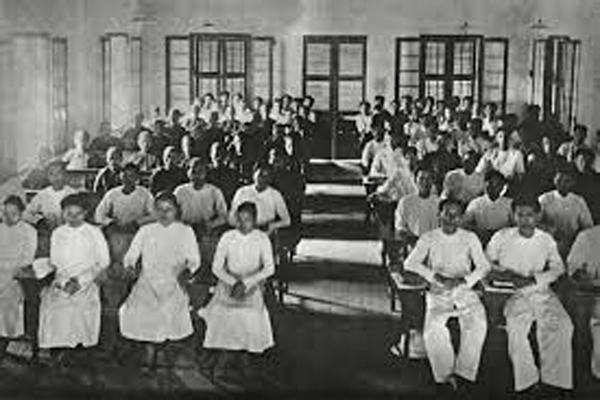
With these activities, by 1975, the Vietnam General Confederation of Evangelical Churches (Southern Region) became a large Protestant organization in Vietnam with 146,000 followers, 190 pastors, 167 missionaries, 155 missionary students and 530 sects. The Central Highlands alone had 57,768 followers, 42 pastors, 91 missionaries, 50 missionary students, and 216 sects.
Along with the implementation of the renovation process throughout the country, the Government of Vietnam allowed the Vietnam General Confederation of Evangelical Churches (Southern Region) to make preparations in all aspects for the rebuilding of their organization. In October 2000, the Vietnam General Confederation of Evangelical Churches (Southern Region) established the Mobilizing Committee for the Church Congress, which included twenty-four pastors. These pastors were chosen from a list of key pastors mentioned in the will of the Chairman Pastor Ong Van Huyen. They included Pastor Duong Thanh (Da Nang), Pastor Nguyen Xuan Vong (Quang Nam), Pastor Dinh Thong (Phu Yen), Pastor Tran Ba Thanh (Ho Chi Minh City), Pastor Tang Van Hi (Ben Tre) and Pastor Ngo Van Buu (Dong Thap). After several months of urgent preparation, in February 2001, the Forty-third Church Congress was held in Ho Chi Minh City. It involved the participation of 382 delegates, including pastors, evangelists and representative followers from all Protestant sects. Among them, there were 58 pastors, missionaries and representative followers from the Central Highlands. The Forty-third Church Congress approved the new charter called the Charter 2001. It also approved the official name of the Vietnam General Confederation of Evangelical Churches (Southern Region), and elected the Managing Committee including twenty-three pastors and evangelists. It appointed Pastor Pham Xuan Thieu as the Chairman, Pastor Duong Thanh and Tang Van Hi as the Vice Chairmen, Pastor Thai Phuoc Truong as the General Secretary and Pastor PhanQuang Thieu as the General Treasurer. The Forty-forth Church Congress (April 2004) elected Pastor Thai Phuoc Truong as the Chairman, Pastor Ngo Van Buu and Pastor Tang Van Hi as the Vice Chairmen, Pastor Le Van Thien as the General Secretary and Pastor Le Cao Qui as the General Treasurer. The Forty-fifth Church Congress (March 2009) appointed Pastor Thai Phuoc Truong as the Chairman of the Managing Committee for the new term 2009-2013, Pastor Phan Vinh Cu and Pastor Ngo Van Buu as the Vice Chairmen, Pastor Le Cao Qui as the General Secretary and Pastor Pham Quang Thieu as the General Treasurer.
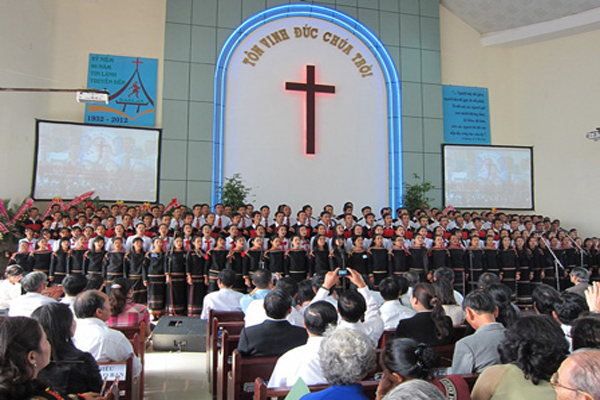
When it was officially recognized as a legal entity in terms of organization by the Government of Vietnam, the Forty-third Church Congress in 2001 confirmed:
"The operation motto of the Vietnam General Confederation of Evangelical Churches (Southern Region) is: Live the Gospel, worship God, and serve the Fatherland and the nation.
"The Vietnam General Confederation of Evangelical Churches (Southern Region) operates in accordance with the Constitution and laws of the Socialist Republic of Vietnam and conforms to the regulations of the State authorities.
"The Vietnam General Confederation of Evangelical Churches (Southern Region) pays attention to the education of patriotism, civic obligations, and the sense of abiding by State laws and uniting with the whole people to build the country and protect peace."
In terms of organization, the Vietnam General Confederation of Evangelical Churches (Southern Region) has two organizational levels: the central level and the branch level. There are representative committees or representatives in cities and provinces. Each term of the Managing Committee lasts four years; each representative committee or representative, two years; and each branch-level managing committee, two years. The Vietnam General Confederation of Evangelical Churches (Southern Region) also has the Council of Religious Hierarchy, which is relatively independent of the Managing Committee. The Council includes such titles as Chairman, Vice Chairman and General Secretary. Each of its terms lasts three years.
In the context of the country being unified and firmly marching on the road of renovation, the Vietnam General Confederation of Evangelical Churches (Southern Region), with its new and progress direction as mentioned above, will become more and more attached to the nation.

